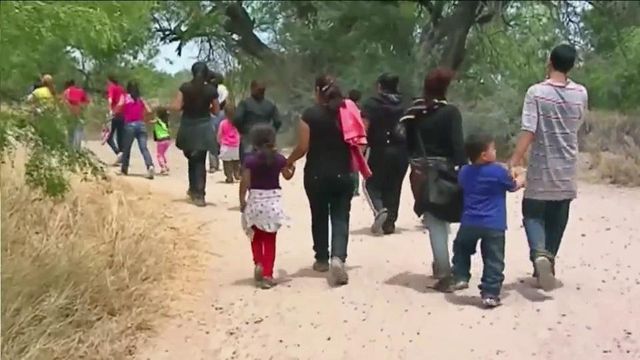Border patrol: Fewer children taken into custody this year
Each year, tens of thousands of children – mostly from Central America – cross the Mexican border into the U.S. Some of those children end up in North Carolina.
Last year, WRAL News reporter Leyla Santiago and photojournalist Zac Gooch traveled to the Rio Grande Valley in southern Texas to trace the path of the children, find out what kind of care they were receiving and learn how the crisis was impacting North Carolina.
WRAL News recently learned that Texas border patrol officials have seen a 63 percent decrease from last summer to this summer in the number of unaccompanied children taken into custody.
“We are doing better than we were last year, but that doesn't make it a good thing. Better than bad isn't necessarily good,” said Chris Cabrera, vice president of the local union for border patrol agents.
In the last few weeks, however, Cabrera says the numbers have started to climb.
“They're expecting different spikes to come along any day now,” he said. “We're having a meeting with DPS (Department of Public Safety) and the local entities and let them know what the overflow plan is.”
For many of the children, home is not directly on the other side of the border. For most, home is beyond Mexico in Central America.
The U.S. Department of Health and Human Services tries to connect children to family members in the U.S. Until then, they stay in government-run shelters, which have caused controversy. Welcomed or not, the children making it into the shelters might consider themselves lucky, because they no longer face the dangers of being smuggled into the U.S.
About three-fourths of the children are boys age 14 and older, and most come from Guatemala, El Salvador and Honduras, according to the Administration for Children and Families. In fiscal year 2013, the children originated from:
- Guatemala: 37 percent
- El Salvador: 26 percent
- Honduras: 30 percent
- Mexico: 3 percent
- Ecuador: 2 percent
- Other: 3 percent
Last year, the federal government released more than 2,000 children to sponsors in North Carolina. So far this year, that number is 544. The children are required to see a judge in a U.S. immigration courtroom, a system still struggling with the extra caseload. To date, about 27,000 cases are pending.
Maycol Murillo, 18, was one of those cases. He came to the U.S. last year at age 17 to escape violence in Honduras. He wanted to study in the U.S. maybe one day become a chemist.
His family says he dropped out of school to work full time and pay for an immigration attorney. They say he left their home when he received a voluntary deportation notice.
Immigration experts say the impact of last year's surge of children entering the U.S. is still evident in North Carolina, on the border and in the lives of the children at the center of it all.











